 Theoretical researchers have found a way to make quantum sensors exponentially more sensitive by harnessing a unique physics phenomenon.
Theoretical researchers have found a way to make quantum sensors exponentially more sensitive by harnessing a unique physics phenomenon.
Monday, November 16, 2020
Analysis paves way for more sensitive quantum sensors
 Theoretical researchers have found a way to make quantum sensors exponentially more sensitive by harnessing a unique physics phenomenon.
Theoretical researchers have found a way to make quantum sensors exponentially more sensitive by harnessing a unique physics phenomenon.
New technology allows more precise view of the smallest nanoparticles
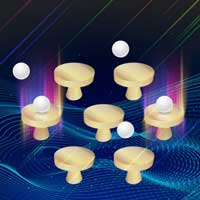 Scientists have reported a new optical imaging technology, using a glass side covered with gold nanodiscs that allows them to monitor changes in the transmission of light and determine the characteristics of nanoparticles as small as 25 nanometers in diameter.
Scientists have reported a new optical imaging technology, using a glass side covered with gold nanodiscs that allows them to monitor changes in the transmission of light and determine the characteristics of nanoparticles as small as 25 nanometers in diameter.
A single molecular switch reveals atomic-scale light dynamics
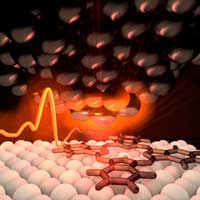 Researchers have developed a groundbreaking method to detect the dynamics of light on such a small scale with high temporal resolution.
Researchers have developed a groundbreaking method to detect the dynamics of light on such a small scale with high temporal resolution.
Highly sensitive detection of circularly polarized light without a filter
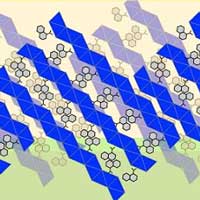 Scientists have developed a photodiode using a crystalline film composed of lead perovskite compounds with organic chiral molecules to detect circularly polarized light without a filter. It is expected as a technology for visualization of the invisible change of object surfaces such as stress intensity and distribution.
Scientists have developed a photodiode using a crystalline film composed of lead perovskite compounds with organic chiral molecules to detect circularly polarized light without a filter. It is expected as a technology for visualization of the invisible change of object surfaces such as stress intensity and distribution.
More efficient conversion of heat into electricity by tinkering with nanostructure
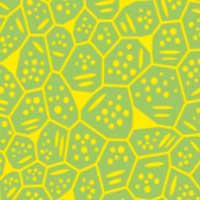 Scientists have not only been able to explain how nanostructures in thermoelectric materials can improve energy efficiency but they also propose a commercially more attractive way to manufacture nanostructured thermoelectric materials, increasing the chances for mass-production of thermoelectric energy.
Scientists have not only been able to explain how nanostructures in thermoelectric materials can improve energy efficiency but they also propose a commercially more attractive way to manufacture nanostructured thermoelectric materials, increasing the chances for mass-production of thermoelectric energy.
It's what on the inside that counts
 Sometimes, the inside of a material can determine what happens on the outside. A team of physicists has devised a new way to make use of this general truth, in particular in systems that do not conserve energy.
Sometimes, the inside of a material can determine what happens on the outside. A team of physicists has devised a new way to make use of this general truth, in particular in systems that do not conserve energy.
Novel glass materials made from MOFs and inorganic components
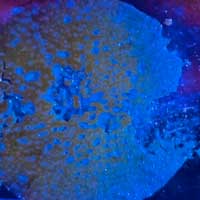 Researchers succeeded in creating a new class of hybrid glass materials that combine organic and inorganic components. To do this, the scientists use special material combinations in which chemical bonds between organometallic and inorganic glasses can be generated.
Researchers succeeded in creating a new class of hybrid glass materials that combine organic and inorganic components. To do this, the scientists use special material combinations in which chemical bonds between organometallic and inorganic glasses can be generated.
Scientists achieve 90% efficiency converting light energy into surface waves on graphene
 Researchers have achieved a nearly 90% efficiency converting light energy into surface waves on graphene. They relied on a laser-like energy conversion scheme and collective resonances.
Researchers have achieved a nearly 90% efficiency converting light energy into surface waves on graphene. They relied on a laser-like energy conversion scheme and collective resonances.
Printable two-dimensional superconducting monolayers
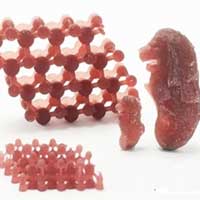 Scientists have developed a scalable electrochemical exfoliation method to synthesise two-dimensional (2D) superconducting material for use in printing technologies.
Scientists have developed a scalable electrochemical exfoliation method to synthesise two-dimensional (2D) superconducting material for use in printing technologies.
Subscribe to:
Comments (Atom)
